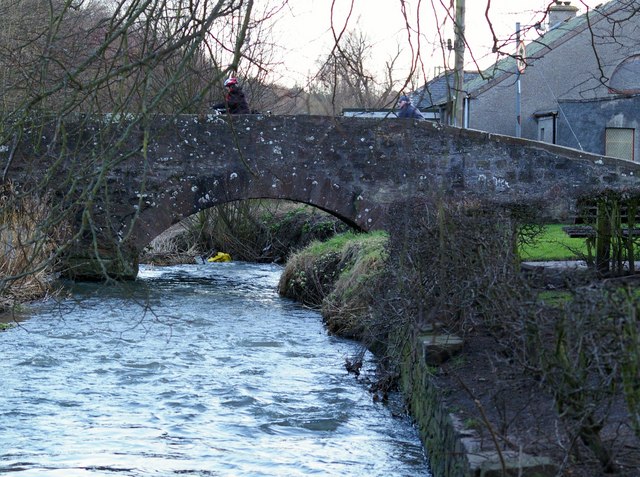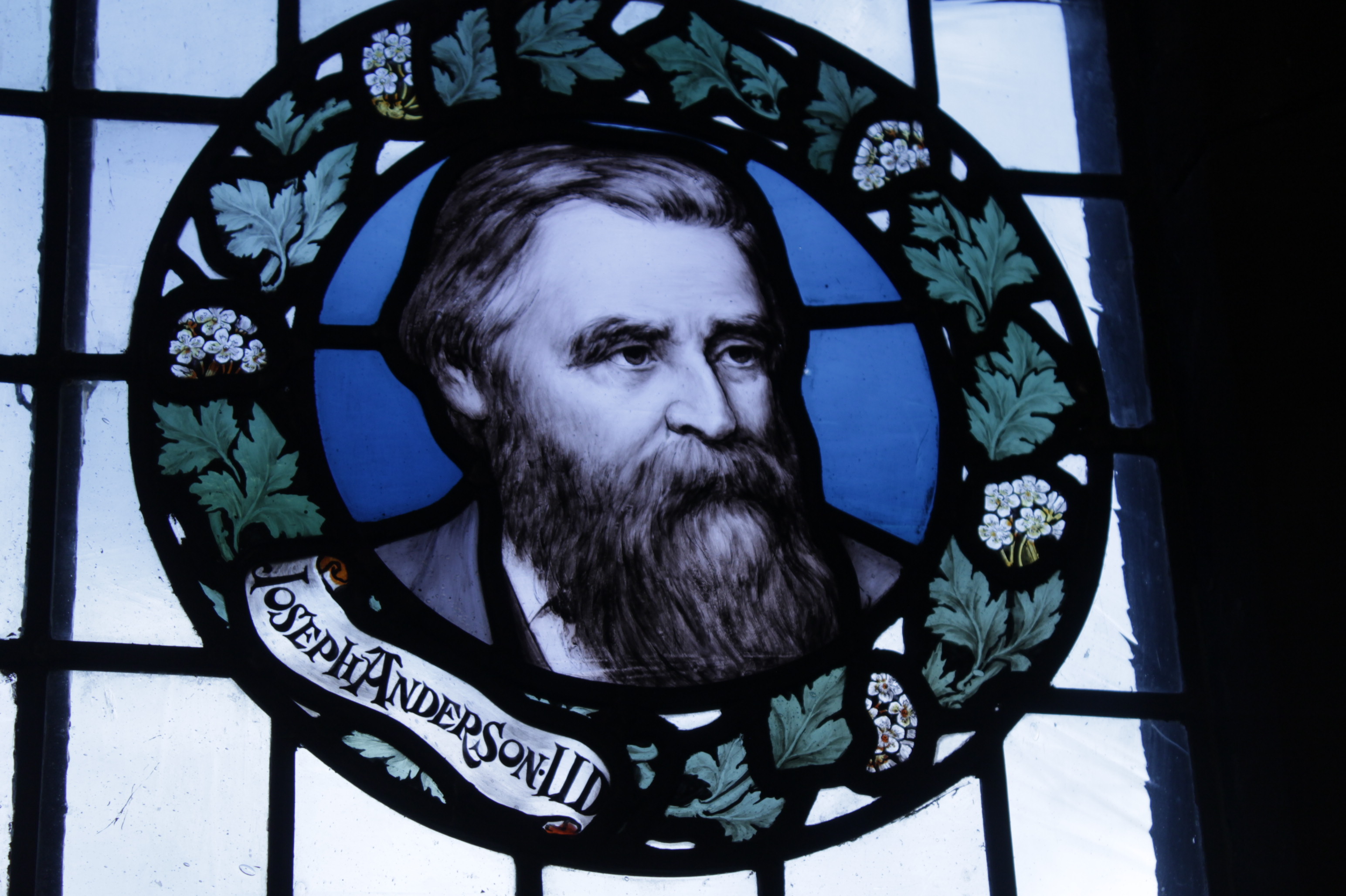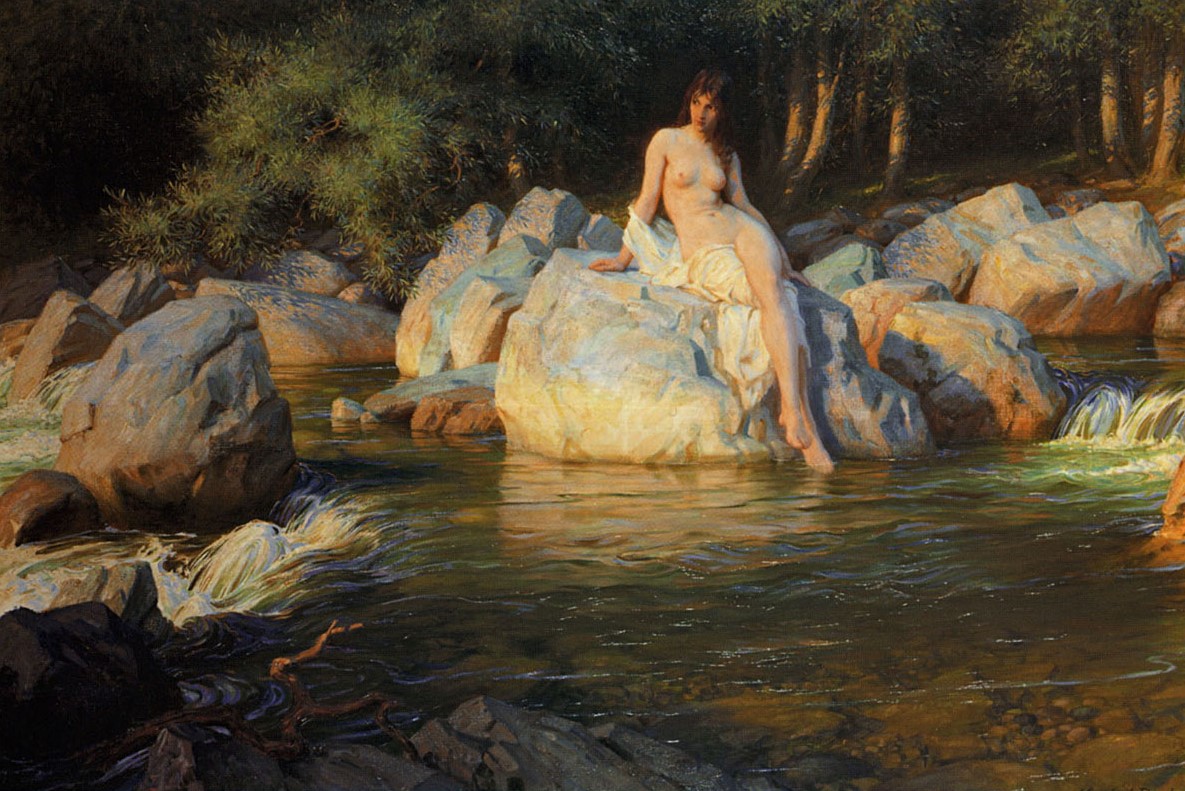|
St Vigeans
St Vigeans is a small village and parish in Angus, Scotland, immediately to the north of Arbroath. Originally rural, it is now more or less a suburb of the town of Arbroath. History The name St Vigeans is derived from ''Vigeanus'', a Latinised form of the Old Irish name Féichín. Saint Feichin flourished in the 7th century. There is no record of his having visited what is now Scotland, but followers of his cult may have founded a monastery among the Picts at St Vigeans as early as the 8th century. This is shown by the unusual dedication, and especially by the collection of more than thirty elaborately carved stones preserved in the St Vigeans Sculptured Stones Museum (converted from an old cottage) in the village (Historic Scotland; key from Arbroath Abbey visitor centre). The collection includes cross-slabs, some with Pictish symbols, cross fragments, recumbents, and architectural fragments. It is one of the largest and finest in Scotland of its period, and includes stone ... [...More Info...] [...Related Items...] OR: [Wikipedia] [Google] [Baidu] |
Angus, Scotland
Angus ( sco, Angus; gd, Aonghas) is one of the 32 local government council areas of Scotland, a registration county and a lieutenancy area. The council area borders Aberdeenshire, Dundee City and Perth and Kinross. Main industries include agriculture and fishing. Global pharmaceuticals company GSK has a significant presence in Montrose in the north of the county. Angus was historically a province, and later a sheriffdom and county (known officially as Forfarshire from the 18th century until 1928), bordering Kincardineshire to the north-east, Aberdeenshire to the north and Perthshire to the west; southwards it faced Fife across the Firth of Tay; these remain the borders of Angus, minus Dundee which now forms its own small separate council area. Angus remains a registration county and a lieutenancy area. In 1975 some of its administrative functions were transferred to the council district of the Tayside Region, and in 1995 further reform resulted in the establishme ... [...More Info...] [...Related Items...] OR: [Wikipedia] [Google] [Baidu] |
Middle Ages
In the history of Europe, the Middle Ages or medieval period lasted approximately from the late 5th to the late 15th centuries, similar to the post-classical period of global history. It began with the fall of the Western Roman Empire and transitioned into the Renaissance and the Age of Discovery. The Middle Ages is the middle period of the three traditional divisions of Western history: classical antiquity, the medieval period, and the modern period. The medieval period is itself subdivided into the Early Early may refer to: History * The beginning or oldest part of a defined historical period, as opposed to middle or late periods, e.g.: ** Early Christianity ** Early modern Europe Places in the United States * Early, Iowa * Early, Texas * Early ..., High Middle Ages, High, and Late Middle Ages. Population decline, counterurbanisation, the collapse of centralized authority, invasions, and mass migrations of tribes, which had begun in late antiquity, continued i ... [...More Info...] [...Related Items...] OR: [Wikipedia] [Google] [Baidu] |
David Chapel
David Chapel (23 June 1882 — 4 May 1912) was a Scottish first-class cricketer and advocate. The son of the solicitor David Chapel, he was born in March 1930 at St Vigeans, Angus. He was educated at Arbroath High School, before matriculating to the University of Edinburgh. From there was admitted to the Faculty of Advocates in March 1905. A club cricketer for Grange Cricket Club, Chapel made his debut for Scotland against Ireland at Perth in 1909. He made three further first-class appearances for Scotland, playing against Ireland in 1910 and 1911, in addition to the touring Indians in 1911. As a left-arm medium-fast bowler, he took 18 wickets at an average of 18.05; he took a five wicket haul on two occasions, with best figures of 5 for 34 against the Indians. As a batsman, he scored 68 runs at a batting average of 13.60, with a highest score of 36. In May 1912, Chapel became afflicted with appendicitis, for which he underwent an operation at Arbroath on Saturday, 4 May. Ho ... [...More Info...] [...Related Items...] OR: [Wikipedia] [Google] [Baidu] |
Isabella Carrie
Isabella Scrimgeour Carrie (3 May 1878 – 29 November 1981) was a Scottish suffragette and schoolteacher. She became a suffragette after bouncers threw her out of a meeting where Winston Churchill was speaking. She was said to have remarked, "I did not come to the meeting as a suffragette, but I am now". Life Carrie was born in Arbroath in 1878 to Richard and Ann Carrie. She attended school locally and at the age of fourteen she became a pupil-teacher. This meant that she got some training as she taught at a school for four years. She moved to Edinburgh where she attended the Church of Scotland Training College. She then taught in Fife and Arbroath but her health declined. She was teaching in Dundee in 1908 when the suffragettes were beginning to make headlines.Hamilton, S. (2004-09-23). Carrie, Isabella Scrimgeour (1878–1981), suffragette and schoolteacher. Oxford Dictionary of National Biography. Retrieved 29 November 2017, from http://www.oxforddnb.com/view/10.1093/ref: ... [...More Info...] [...Related Items...] OR: [Wikipedia] [Google] [Baidu] |
Joseph Anderson (antiquarian)
Joseph Anderson LLD HRSA (1832–1916) was a Scottish antiquarian who served as keeper of the National Museum of Antiquities of Scotland from 1869 to 1913. Life Anderson was born in Angus, the son of an agricultural labourer, grew up in St Vigeans and attended Arbroath Education Institution. He taught at the English School in Constantinople from 1856-59. In 1860, after moving back to Scotland, he became editor of the ''John O'Groat'' journal. At this time he started to excavate in Caithness, in partnership with Robert Shearer. From 1869 to 1913, 44 years, he was the keeper of the National Museum of Antiquities of Scotland. He was also editor of the ''Proceedings of the Society of Antiquaries of Scotland'' from 1869 to his death in 1916. V. Gordon Childe wrote that by 1886 Anderson "had sketched the essential outlines of Scottish prehistory in a comprehensive and scientific survey such as then existed in no other country". As keeper of the National Museum, he oversaw ... [...More Info...] [...Related Items...] OR: [Wikipedia] [Google] [Baidu] |
Bridge At St
A bridge is a structure built to span a physical obstacle (such as a body of water, valley, road, or rail) without blocking the way underneath. It is constructed for the purpose of providing passage over the obstacle, which is usually something that is otherwise difficult or impossible to cross. There are many different designs of bridges, each serving a particular purpose and applicable to different situations. Designs of bridges vary depending on factors such as the function of the bridge, the nature of the terrain where the bridge is constructed and anchored, and the material used to make it, and the funds available to build it. The earliest bridges were likely made with fallen trees and stepping stones. The Neolithic people built boardwalk bridges across marshland. The Arkadiko Bridge (dating from the 13th century BC, in the Peloponnese) is one of the oldest arch bridges still in existence and use. Etymology The ''Oxford English Dictionary'' traces the origin of the ... [...More Info...] [...Related Items...] OR: [Wikipedia] [Google] [Baidu] |
Kelpie
A kelpie, or water kelpie (Scottish Gaelic: ''Each-Uisge''), is a shape-shifting spirit inhabiting lochs in Scottish folklore. It is usually described as a black horse-like creature, able to adopt human form. Some accounts state that the kelpie retains its hooves when appearing as a human, leading to its association with the Christian idea of Satan as alluded to by Robert Burns in his 1786 poem "Address to the Devil". Almost every sizeable body of water in Scotland has an associated kelpie story, but the most extensively reported is that of Loch Ness. The kelpie has counterparts across the world, such as the Germanic nixie, the wihwin of South America and the Australian bunyip. The origins of narratives about the creature are unclear but the practical purpose of keeping children away from dangerous stretches of water and warning young women to be wary of handsome strangers has been noted in secondary literature. Kelpies have been portrayed in their various forms in art and ... [...More Info...] [...Related Items...] OR: [Wikipedia] [Google] [Baidu] |
Cap-house
A cap-house (sometimes written cap house or caphouse) is a small watch room, built at the top of a spiral staircase, often giving access to a parapet on the roof of a tower house or castle. They provided protection from the elements by enclosing the top of the stairway, and sometimes incorporated windows or gun loops. They were built in various forms, including square turrets, simple boxes, or small houses with gabled roofs, which were sometimes large enough to provide accommodation for a look-out. Cap-houses were an authentic feature of the design of medieval and early-modern tower houses in Scotland, and were a frequent element used in the later Scottish Baronial architecture. Gallery Medieval and early-modern cap-houses File:Knock_Castle_4.jpg, Knock Castle, Aberdeenshire, showing the cap-house above the entrance File:Plunton_Castle_(geograph_4888980).jpg, Plunton Castle, with a gabled cap-house at the top of the stair wing (shown on the right) File:Rusco_Castle_-_geo ... [...More Info...] [...Related Items...] OR: [Wikipedia] [Google] [Baidu] |
Victorian Restoration
The Victorian restoration was the widespread and extensive refurbishment and rebuilding of Church of England churches and cathedrals that took place in England and Wales during the 19th-century reign of Queen Victoria. It was not the same process as is understood today by the term building restoration. Against a background of poorly maintained church buildings, a reaction against the Puritan ethic manifested in the Gothic Revival, and a shortage of churches where they were needed in cities, the Cambridge Camden Society and the Oxford Movement advocated a return to a more medieval attitude to churchgoing. The change was embraced by the Church of England which saw it as a means of reversing the decline in church attendance. The principle was to "restore" a church to how it might have looked during the " Decorated" style of architecture which existed between 1260 and 1360, and many famous architects such as George Gilbert Scott and Ewan Christian enthusiastically accepted c ... [...More Info...] [...Related Items...] OR: [Wikipedia] [Google] [Baidu] |
Scottish Reformation
The Scottish Reformation was the process by which Scotland broke with the Papacy and developed a predominantly Calvinist national Kirk (church), which was strongly Presbyterian in its outlook. It was part of the wider European Protestant Reformation that took place from the sixteenth century. From the late fifteenth century the ideas of Renaissance humanism, critical of aspects of the established Catholic Church, began to reach Scotland, particularly through contacts between Scottish and continental scholars. In the earlier part of the sixteenth century, the teachings of Martin Luther began to influence Scotland. Particularly important was the work of the Lutheran Scot Patrick Hamilton, who was executed in 1528. Unlike his uncle Henry VIII in England, James V avoided major structural and theological changes to the church and used it as a source of income and for appointments for his illegitimate children and favourites. His death in 1542 left the infant Mary, Queen of Scots as ... [...More Info...] [...Related Items...] OR: [Wikipedia] [Google] [Baidu] |
St Vigeans Church
St Vigeans Church is a Church of Scotland parish church, serving the parish of the ancient village of St Vigeans on the outskirts of Arbroath, Angus, Scotland. The church was rebuilt in the 12th century but not consecrated until 1242 by David de Bernham, Bishop of St Andrews. The church underwent some alteration in the 15th century, but suffered very little change following the Scottish Reformation of 1560. A major restoration was carried out in 1871 by the Scottish Victorian architect Robert Rowand Anderson. See also *List of Church of Scotland parishes *List of Category A listed buildings in Angus This is a list of Category A listed buildings in Angus, Scotland. In Scotland, the term listed building refers to a building or other structure officially designated as being of "special architectural or historic interest". Category A struc ... References External linksSt Vigeans Church {{DEFAULTSORT:Saint Vigeans Church Church of Scotland churches in Scotland Churches in ... [...More Info...] [...Related Items...] OR: [Wikipedia] [Google] [Baidu] |
William I Of Scotland
William the Lion, sometimes styled William I and also known by the nickname Garbh, "the Rough"''Uilleam Garbh''; e.g. Annals of Ulster, s.a. 1214.6; Annals of Loch Cé, s.a. 1213.10. ( 1142 – 4 December 1214), reigned as King of Scots from 1165 to 1214. His 48-year-long reign was the second longest in Scottish history, and the longest for a Scottish monarch before the Union of the Crowns in 1603. Early life William was born around 1142, during the reign of his grandfather King David I of Scotland. His parents were the king's son Henry and Ada de Warenne. William was around 10 years old when his father died in 1152, making his elder brother Malcolm the heir apparent to their grandfather. From his father, William inherited the Earldom of Northumbria. David I died the next year, and William became heir presumptive to the new king, Malcolm IV. In 1157, William lost the Earldom of Northumbria to Henry II of England. Reign Malcolm IV did not live for long, and upon his death ... [...More Info...] [...Related Items...] OR: [Wikipedia] [Google] [Baidu] |







